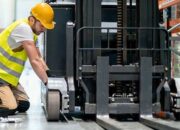Linde electric forklift 1400 Kg – Reach truck Linde – Linde warehouse forklift is a famous and popular product line of Linde company because it is compactly designed, has the ability to move flexibly, and has a load capacity of 1. ,4 tons, 1.7 tons, 2 tons of forks allow to stack and unfold with a height of up to 9 meters, the vehicle uses electric energy, so it is very suitable for working in closed warehouses, cold storage, outdoor .. .
Samcovina currently imports a lot of reach trucks manufactured by Linde, all cars are imported original, condition is over 80% new, the car is stored at our district 9 parking lot (near Cat Lai port). Selling at a good price with thoughtful warranty service.
It is our pleasure to welcome you
bán xe nâng điện Linde






